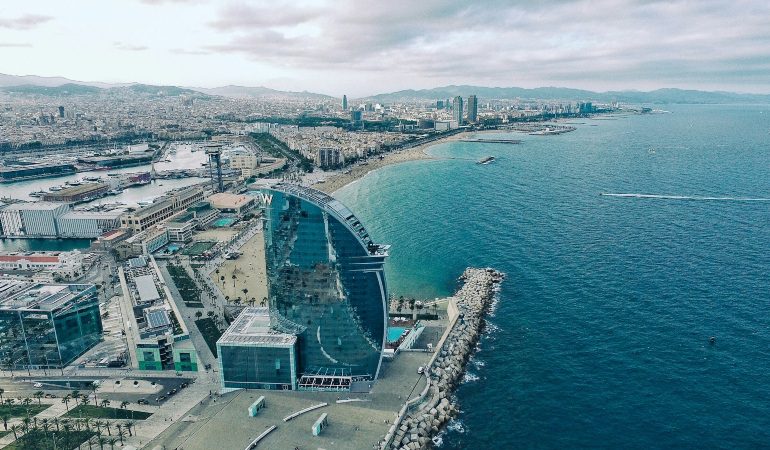Urbanization is reshaping our world, and its effects are particularly evident in real estate investment strategies. As cities expand and evolve, they offer new opportunities and challenges for investors. Understanding how urbanization impacts commercial real estate is crucial for adapting investment approaches and seizing emerging prospects. In this article, you’ll discover how global urbanization trends, including the rise of megacities and the growing appeal of secondary and tertiary cities, influence real estate strategies and what you can do to stay ahead in this dynamic market.
The Rise of Megacities
Megacities, with populations exceeding 10 million, rapidly expand and shape global economies. These enormous urban centers, such as Tokyo, New York, and Shanghai, are pivotal hubs for finance, culture, and politics. Driven by both natural growth and migration, these cities are seeing significant increases in population. This growth directly influences commercial property demand, with businesses seeking prime locations for offices, retail spaces, and hospitality venues. The allure of megacities lies in their economic vibrancy and extensive infrastructure developments, making them attractive for strategic investments. Successful projects, like New York’s Hudson Yards and Tokyo’s Roppongi Hills, highlight the potential for lucrative returns in these dynamic urban environments.
The Growing Appeal of Secondary and Tertiary Cities
While megacities grab global headlines, secondary and tertiary cities are emerging as attractive investment destinations. Secondary towns, such as Barcelona and Melbourne, play crucial roles within their nations, offering diverse economic opportunities and vibrant lifestyles without the intense competition and high costs of megacities. Tertiary cities, like Austin and Kraków, may be smaller but are growing rapidly due to economic development and urbanization. These cities often provide unique advantages, such as lower real estate prices and untapped markets. They are becoming popular among businesses and investors seeking new growth areas. Successful investments in these cities can offer substantial returns as they continue to develop and attract more residents and companies.

There’s much to consider if you’re contemplating leaving a typical U.S. city like NYC for a fresh start in a new country. Transparent International NYC stands out as a reliable partner for your international move. They offer comprehensive services, including household and vehicle moving, packing, and more, ensuring a smooth transition to your new home. With their expertise, you can confidently navigate the complexities of relocating abroad and focus on the exciting new opportunities that await you.
Shifting Demographics and Consumer Behavior
Urbanization is not just about the growth of cities; it also involves changing demographics and evolving consumer behaviors. Today’s cities are seeing a rise in younger populations, particularly Millennials and Gen Z, who prefer mixed-use developments that combine residential, commercial, and recreational spaces. This shift drives demand for properties that offer convenience and vibrant community experiences. For example, developments integrating workspaces with living areas are becoming increasingly popular. Adapting commercial spaces to meet these new preferences can be a smart investment strategy. Cities that cater to these evolving needs are attracting businesses and residents alike, leading to successful real estate ventures. By staying attuned to these changing trends, you can better position yourself to capitalize on emerging opportunities.

Technological Advancements: A Game-Changer for Real Estate Investment Strategies
Technological advancements are transforming urban landscapes into smart cities, where technology enhances the efficiency and quality of urban life. Smart cities use data and technology to improve infrastructure, transportation, and services, creating more connected and efficient environments. Innovations such as IoT (Internet of Things) devices, smart grids, and automated transportation systems are increasingly common. Investing in properties within these tech-forward cities can offer significant advantages, including increased property values and lower operational costs. For instance, cities like Singapore and Barcelona lead smart city development, showcasing how tech-driven enhancements can attract businesses and residents. Embracing these technological trends in your real estate investments can lead to rewarding opportunities and a competitive edge in the market.
Sustainability and Green Building Trends
Sustainability is a major trend reshaping real estate, with a growing demand for eco-friendly buildings and practices. As concerns about climate change and environmental impact rise, investors and developers increasingly prioritize green building standards. Sustainable properties often feature energy-efficient designs, use of renewable materials, and reduced carbon footprints. Investing in such green buildings meets market demands and offers long-term benefits, including lower operating costs and higher tenant satisfaction. Projects like the Bosco Verticale in Milan and the Edge in Amsterdam highlight the successful integration of sustainability in commercial real estate.

Global Economic Influences and Investment Strategies
Global economic factors significantly impact real estate investment strategies, shaping market dynamics and influencing investment decisions. Economic fluctuations, such as recessions or booms, can affect property values and demand. For instance, during economic downturns, commercial real estate may face challenges, while during periods of growth, property values may rise sharply. Understanding these global economic trends helps you devise strategies to navigate market uncertainties. Diversifying your portfolio, focusing on stable sectors, and investing in emerging markets can mitigate risks and capitalize on opportunities.
The Future of Commercial Real Estate Investment
Looking ahead, the future of commercial real estate investment is shaped by ongoing urbanization trends and evolving market dynamics. Emerging trends include the increasing popularity of mixed-use developments, the rise of flexible workspaces, and technological advancements. Following these trends is a key habit of a successful real estate investor, as staying informed allows for more strategic investment decisions. For example, the demand for hybrid work environments will likely continue, influencing office space requirements. Additionally, secondary and tertiary cities are expected to grow in importance as they become key economic hubs.
Final Thoughts
Global urbanization trends are profoundly reshaping real estate investment strategies. From the explosive growth of megacities to the rising significance of secondary and tertiary cities, these trends offer diverse opportunities for investors. Understanding shifting demographics, technological advancements, and sustainability preferences will help you make informed decisions and adapt to the changing market landscape. As you look to the future, staying aware of these trends and adjusting your strategies accordingly will enable you to seize new opportunities and succeed in the dynamic world of commercial real estate. Embrace these changes, and you’ll be well-positioned to thrive in the evolving real estate market.
Photos used:
https://unsplash.com/photos/burj-al-arab-DcyL0IoCY0A
https://unsplash.com/photos/clear-glass-building-near-sea-under-grey-sky-q_TzfAt4NQ8
https://www.pexels.com/photo/person-holding-a-minimalist-cake-6988564
https://www.pexels.com/photo/vertical-forest-residential-skyscrapers-in-milan-italy-19579742



